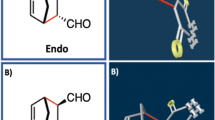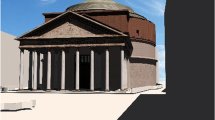Abstract
Education 4.0 can play a significant role in the future of geotechnical engineering education. It can provide personalized and equitable learning experiences and be used to develop skills for the fourth industrial revolution in geotechnical engineering. In this paper, we explore the application of Augmented Reality (AR) and Virtual Reality (VR) models, as part of Education 4.0, to enhance the presentation and communication of soil mechanics concepts. A detailed step-by-step process for creating 3D representations of geotechnical concepts, including texturing, UV mapping, animation, and export and publishing techniques, is introduced. For this purpose, two powerful 3D modeling and animation software programs, Autodesk Maya and Blender, are employed to develop geotechnical avatars in a soil mechanics laboratory. In Autodesk Maya, a detailed representation of the soil phase diagram is presented, while Blender is utilized to create a Consolidated Undrained (CU) triaxial laboratory experiment. The geotechnical testing avatars are then uploaded to Sketchfab, a popular publishing website that supports AR/VR formats. We also explore the potential for establishing a virtual laboratory for geotechnical engineering, highlighting the transformative possibilities it offers in terms of practical learning experiences and educational accessibility.
















Similar content being viewed by others
Code and data availability
All source models and AR/VR models, as referenced in this paper, are deposited on Zenodo and Sketchfab, respectively. The related links are provided in Table 5.
References
Autodesk (2023a) Student and education software: 1-year license—autodesk education community
Autodesk M (2023b) Maya software: Get prices & buy official maya 2024
Azuma RT (1997) A survey of augmented reality. Presence Teleoper Virtual Environ 6:355–385
Budhu M (2010) Soil mechanics and foundations. Wiley
Chen X, Espinoza DN, Prodanovic M, Verma R (2017) Hydrate-bearing sand. http://www.digitalrocksportal.org/projects/122
Feiner S, MacIntyre B, Höllerer T, Webster A (1997) A touring machine: prototyping 3d mobile augmented reality systems for exploring the urban environment. Pers Technol 1:208–217
González-Pérez LI, Ramírez-Montoya MS (2022) Components of education 4.0 in 21st century skills frameworks: systematic review. Sustainability 14(3):1493
Hu X, Goh YM, Lin A (2021) Educational impact of an augmented reality (ar) application for teaching structural systems to non-engineering students. Adv Eng Inform 50:101436
Janeras M, Roca J, Gili JA, Pedraza O, Magnusson G, Núñez-Andrés MA, Franklin K (2022) Using mixed reality for the visualization and dissemination of complex 3d models in geosciences—application to the montserrat massif (spain). Geosciences 12(10):370
Lantada AD (2020) Engineering education 5.0: continuously evolving engineering education. Int J Eng Educ 36:1814–1832
Lato M (2021) Canadian geotechnical colloquium: three-dimensional remote sensing, four-dimensional analysis and visualization in geotechnical engineering - state of the art and outlook. Can Geotech J 58:1065–1076
LearnOpenGL (2015) Normal mapping
Meža S, Turk Žiga, Dolenc M (2015) Measuring the potential of augmented reality in civil engineering. Adv Eng Softw 90:1–10
Milgram P, Takemura H, Utsumi A, Kishino F (1995) Augmented reality: a class of displays on the reality-virtuality continuum. In: Telemanipulator and telepresence technologies, Spie volume 2351, pp 282–292
Miranda J, Navarrete C, Noguez J, Molina-Espinosa J-M, Ramírez-Montoya M-S, Navarro-Tuch SA, Bustamante-Bello M-R, Rosas-Fernández J-B, Molina A (2021) The core components of education 4.0 in higher education: three case studies in engineering education. Comput Electr Eng 93:107278
Mora-Serrano J, Muñoz-La Rivera F, Valero I (2021) Factors for the automation of the creation of virtual reality experiences to raise awareness of occupational hazards on construction sites. Electronics 10(11):1355
Mourtzis D, Angelopoulos J, Panopoulos N (2023) Extended reality (xr) applications for engineering education 5.0. Available at SSRN 4470086
Mukul E, Büyüközkan G (2023) Digital transformation in education: a systematic review of education 4.0. Technol Forecast Soc Change 194:122664
Munoz-La Rivera F, Mora-serrano J, Oñate E (2021) Virtual reality stories for construction training scenarios: the case of social distancing at the construction site. WIT Trans Built Environ 205:37–47
Onsel E, Stead D, Barnett W, Zorzi L, Shaban A (2020) Innovative mixed reality approach to rock mass mapping in underground mining. In: MassMin 2020: proceedings of the eighth international conference & exhibition on mass mining, University of Chile, pp 1375–1383
Poh E, Liong K, Lee JS (2022) Mixed reality for engineering design review using finite element analysis. In: 2022 IEEE international symposium on mixed and augmented reality adjunct (ISMAR-Adjunct), pp 657–662
Qadir J (2023) Engineering education in the era of chatgpt: promise and pitfalls of generative ai for education. In: 2023 IEEE global engineering education conference (EDUCON), pp 1–9
Scaravetti D, Doroszewski D (2019) Augmented reality experiment in higher education, for complex system appropriation in mechanical design. Procedia CIRP, 84, 197–202. 29th CIRP Design Conference 2019, 08-10 May 2019, Póvoa de Varzim, Portgal
Schechter S (2020) Ultimate guide to usdz file formats
Schnabel MA (2009) Framing mixed realities. pp 3–11
Soliman M, Pesyridis A, Dalaymani-Zad D, Gronfula M, Kourmpetis M (2021) The application of virtual reality in engineering education. Appl Sci 11(6):2879
Vásquez-Carbonell M (2022) A systematic literature review of augmented reality in engineering education: hardware, software, student motivation & development recommendations. Digit Educ Rev 41:249–267
Wang S, Gui Y, Liu X, Xiong D, Tian Z et al (2021) Application of vr technology in civil engineering teaching in colleges and universities. Acad J Archit Geotechn Eng 3:7–13
Acknowledgements
This project was undertaken thanks to the funding support provided by the Fonds d’actions pédagogiques stratégiques (FAPS) of Polytechnique Montréal.
Author information
Authors and Affiliations
Corresponding author
Ethics declarations
Competing Interests
The authors have not disclosed any competing interests.
Additional information
Publisher's Note
Springer Nature remains neutral with regard to jurisdictional claims in published maps and institutional affiliations.
Rights and permissions
Springer Nature or its licensor (e.g. a society or other partner) holds exclusive rights to this article under a publishing agreement with the author(s) or other rightsholder(s); author self-archiving of the accepted manuscript version of this article is solely governed by the terms of such publishing agreement and applicable law.
About this article
Cite this article
Afsharipour, M., Maghoul, P. Towards Education 4.0 in Geotechnical Engineering Using a Virtual Reality/Augmented Reality Visualization Platform. Geotech Geol Eng 42, 2657–2673 (2024). https://doi.org/10.1007/s10706-023-02697-x
Received:
Accepted:
Published:
Issue Date:
DOI: https://doi.org/10.1007/s10706-023-02697-x




